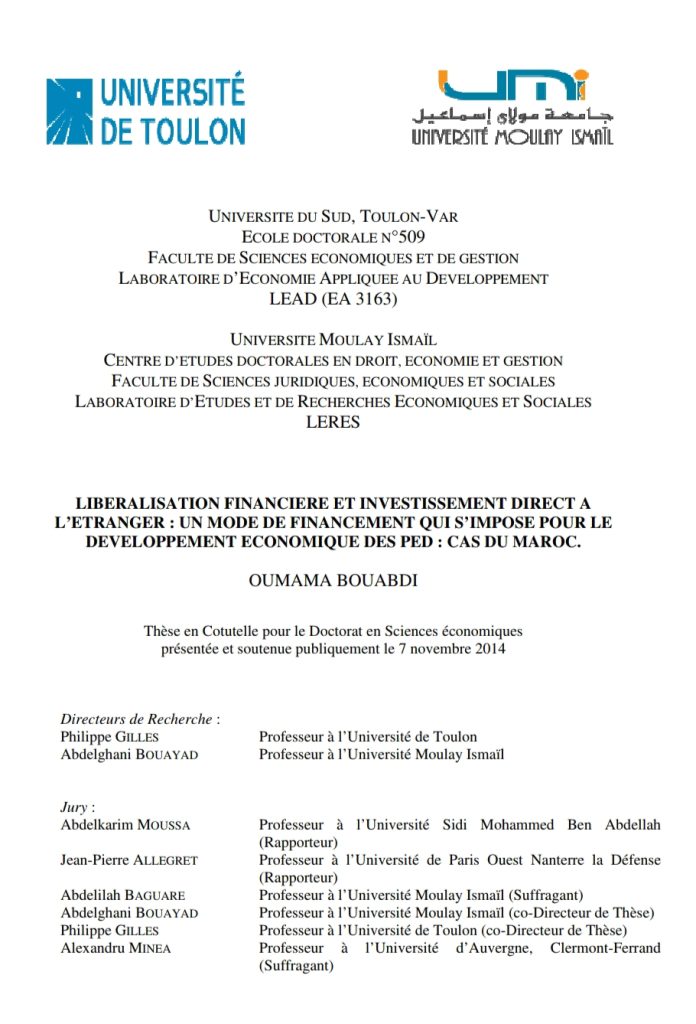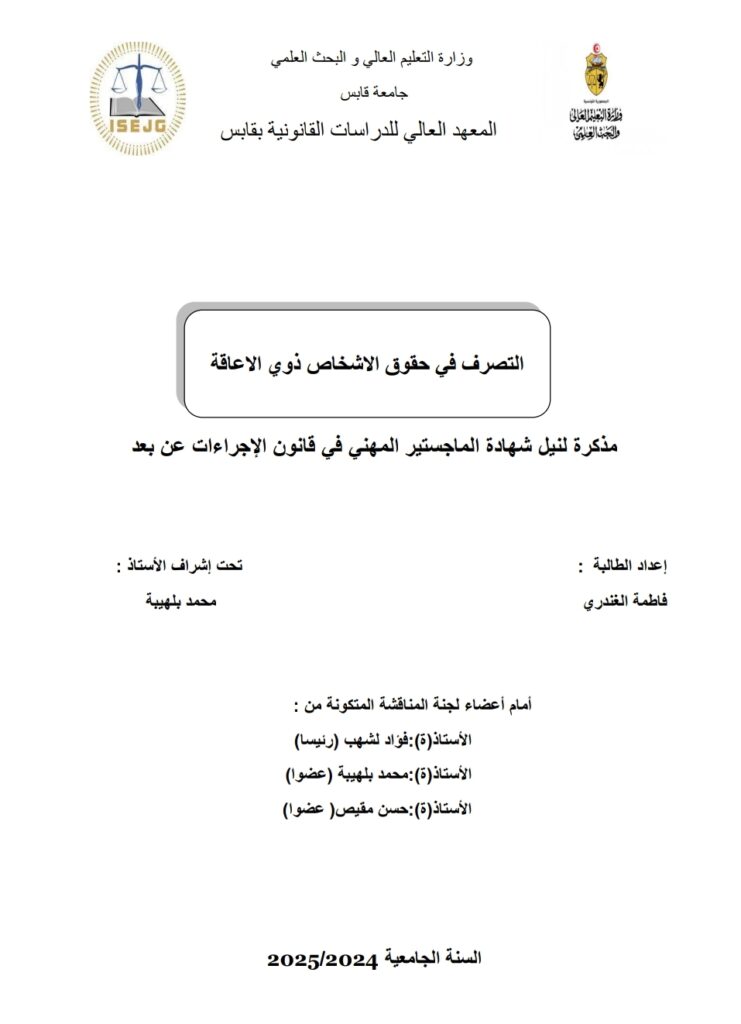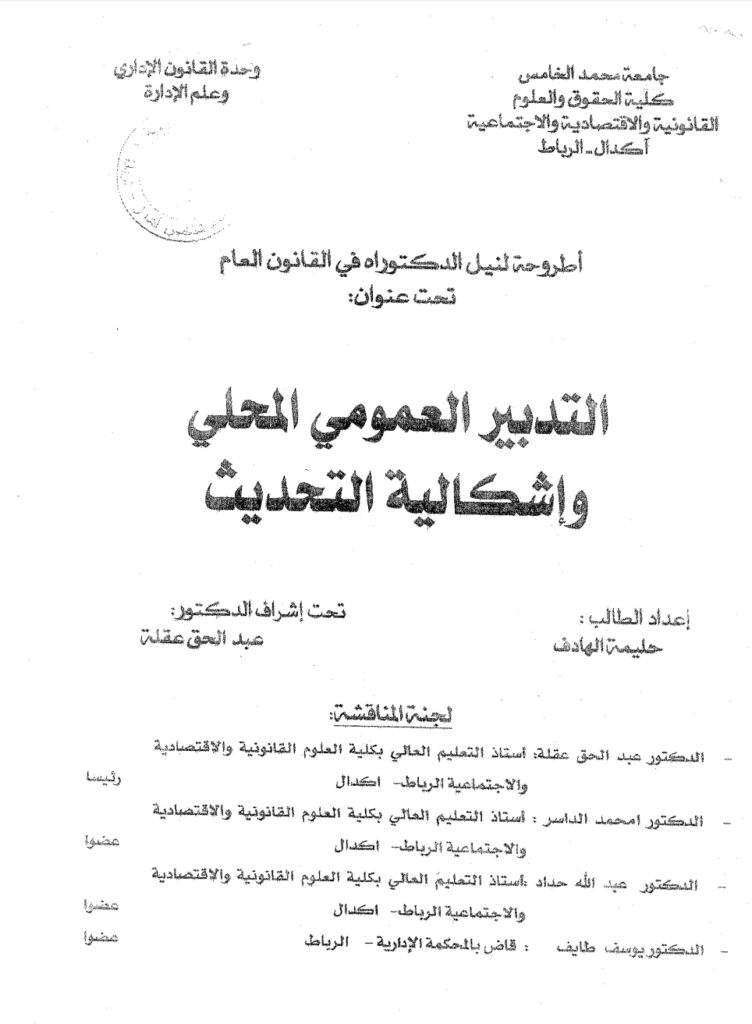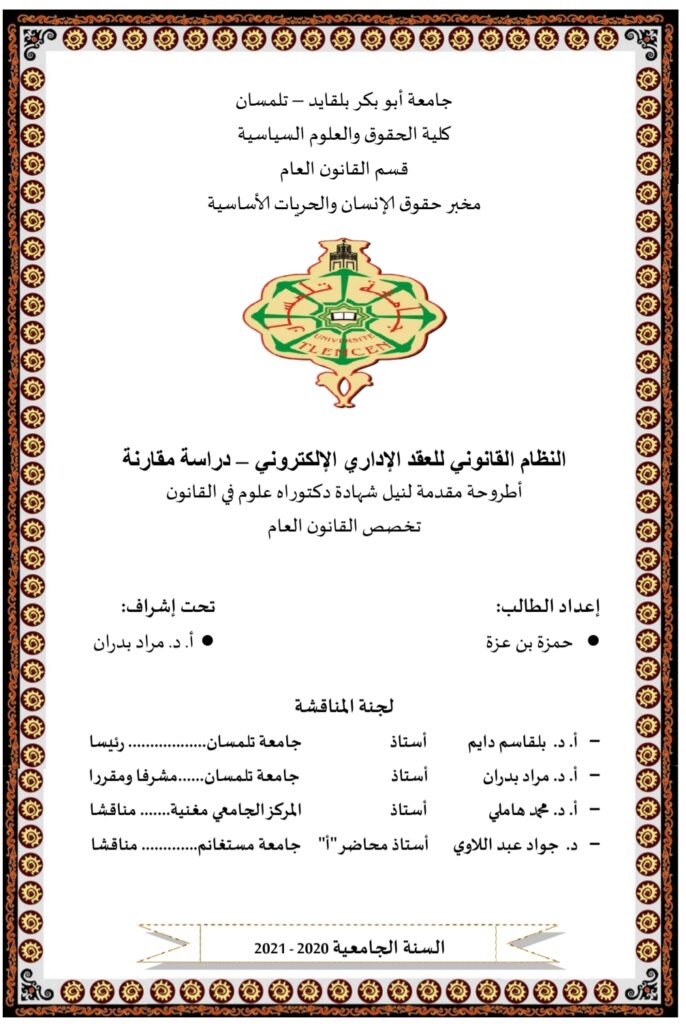LIBERALISATION FINANCIERE ET INVESTISSEMENT DIRECT A L’ETRANGER

LIBERALISATION FINANCIERE ET INVESTISSEMENT DIRECT A L’ETRANGER : UN MODE DE FINANCEMENT QUI S’IMPOSE POUR LE DEVELOPPEMENT ECONOMIQUE DES PED : CAS DU MAROC.
Résumé :
L’aspect peu volatil observé durant les différentes crises financières et l’importance des externalités relatives à la simulation des économies hôtes attribuent aux IDE une
dimension considérable surtout pour les pays en développement (PED).
Dès lors, l’attractivité du territoire est devenue la priorité principale des politiques des PED vers une ouverture sur les marchés internationaux. Ce qui explique la grande vague de réformes structurelles et de stratégies attractives qui a marqué ces économies durant ces deux dernières décennies.
La contribution de cette thèse repose sur l’analyse des déterminants des IDE au niveau macroéconomique et mésoéconomique.
La première étude consiste à estimer l’attractivité des territoires de la région du Moyen Orient et de l’Afrique du Nord (MENA). Nous avons appliqué les nouveaux apports de
l’économétrique spatiale pour la spécification des flux bilatéraux de huit pays MENA en
provenance de 16 pays d’OCDE sur la période 1985-2010. L’objectif est d’examiner la spécificité de cette région en évaluant conjointement la contribution spatiale
interrégionale pour expliquer la nature des IDE et le rôle de l’autocorrélation spatiale intra-régionale à promouvoir l’investissement dans les territoires étudiés.
La deuxième étude procède à l’analyse typique du climat d’investissement marocain objet de la
recherche. Il s’agit de faire une comparaison sectorielle en identifiant la significativité
des déterminants des IDE dans le secteur primaire, le secteur secondaire et le secteur
tertiaire. Le travail consiste en premier lieu d’évaluer l’impact des variables
macroéconomiques sur les flux des IDE dans neuf secteurs. En deuxième lieu, des
variables mesurant la qualité institutionnelle sont intégrées individuellement afin
d’approximer les différentes élasticités du climat juridique et administratif sur
l’attractivité des IDE.
Mots-clés : Investissement direct étrangers , Déterminants, Climat d’investissement,
Analyse spatiale de panel, Flux bilatéraux, Région MENA, Approche
mésoéconomique, Institutions
FINANCIAL LIBERALISATION AND FOREIGN DIRECT INVESTMENT: A
REQUIRED FINANCING MODE FOR ECONOMIC DEVELOPMENT in DCs:
CASE OF MOROCCO.
Abstract:
The low volatility observed during the global financial crises and the importance of
externalities on simulating host economies attribute considerable interest to foreign
direct investment especially for developing countries (DCs). Therefore, the territorial
attractiveness became the main priority for DCs’s policies towards more international
openness. This explains the multitude of structural reforms and attractive strategies
adopted by these economies over the last two decades. The contribution of this thesis is
based on the analysis of FDI determinants at the macroeconomic and mesoeconomic
level. The first study estimates the territorial attractiveness of the Middle East and North
Africa (MENA). We have applied the new contributions of the spatial econometric
specification to examine the bilateral flows from 16 OECD countries to eight MENA
countries over the period 1985-2010. The purpose is to jointly evaluating the spatial
interregional contribution to explain the nature of FDI present in the region and the role of the spatial intraregional autocorrelation to promote investment in the studied areas.
The second study proceeds to analyze the specificity of Moroccan nvestment climate subject of this research. It consists to compare different economic sectors by identifying the significance of the FDI determinants in the primary, secondary and tertiary sectors. Thus, we estimate the impact of macroeconomic
variables on FDI inflows within nine sectors. Thereafter, three institutional variables are
individually incorporated to approximate the various elasticities of the legal and administrative climate on FDI attractiveness.
Keywords: Foreign direct investment, Determinants, Investment climate, Panel spatial
analysis, bilateral inflows, MENA region, Mesoeconomic approach, Institutions.



